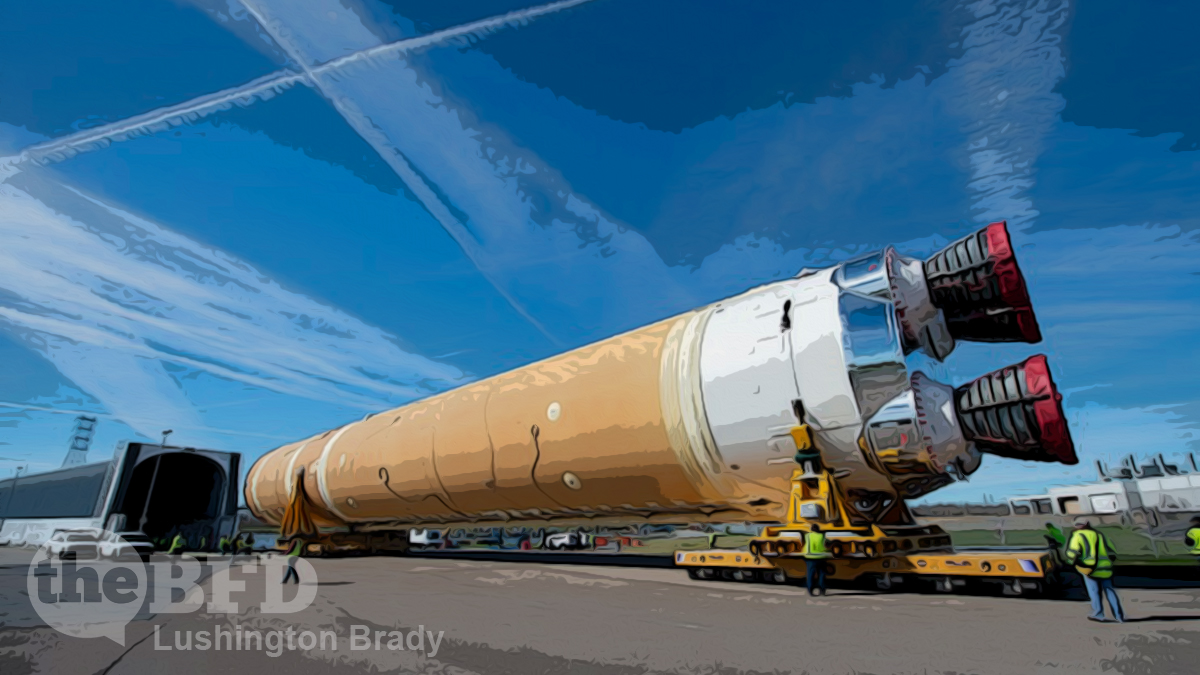The tv series Chernobyl reprised an old Soviet joke: What’s big as a house, burns 20 litres of fuel every hour, puts out a shitload of smoke and noise and cuts an apple into three pieces? A Soviet machine made to cut apples into four pieces!
Lest Americans be inclined to laugh, consider such government boondoggles as “Future Combat Systems”: billed by the Army as its “most ambitious and far-reaching modernization program since World War II”, it cost $18 billion before it was eventually cancelled. It was superseded by the “Ground Combat Vehicle program”, which cost some $28 billion… before it was also cancelled.
Even something simple as a government parking garage for the DC area has ballooned from $40 million to $120 million — and it still isn’t finished.
Then there’s the space program…
This will likely come as a surprise to no one who has closely watched the development of NASA’s next giant rocket, the Space Launch System (SLS), but it’s going to be expensive to use. Like, really expensive – to the tune of $4.1 billion per launch, according to the NASA Inspector General. That’s over double the original expected launch cost.
To put that into perspective, that comes in at $58,000 per kilogram launched to orbit. Currently, SpaceX has slashed the cost per kilo to orbit to just $2,000 — and falling.
Granted, SLS would potentially be the biggest launch system ever created when (or if) it leaves the ground. Therefore, it would have the unique ability to launch single payloads that had never been possible before.
Yet SpaceX’s Starship vehicle has a potential payload capacity almost 30% larger than SLS’s.
And it’s reusable.
The SLS has a huge weakness that hikes its single launch cost up into the billions – it is expendable. After launch, the main stage is lost to the ocean, never to be recovered.
Even a cursory glance at the cockpits of the SLS and its private competitor tells it all. NASA’s future-vision looks exactly like the Apollo capsules of the 1960s: just bigger. By contrast with NASA’s Volkswagen Beetles, SpaceX vehicles look like Bugatti Veyrons.
It’s not the dinosaur thinking of NASA alone that has so dramatically bloated the cost of SLS. The faults go all home to government: Congress forced the agency to enter “cost-plus” contracts with suppliers.
These contracts mean that any firm working on the project would be reimbursed for their expenses and rewarded with a fee over and above those expenses. The obvious problem with such contracts, as has been painfully obvious with SLS contractors Lockheed Martin and Boeing, is that they incentivize the contractors to incur more expenses to do the same amount of work, thereby increasing the fee they receive.
Universe Today
Boeing, for instance, has been paid a handsome bonus for, well, screwing the job. The project has also, just coincidentally no doubt, provided plenty of jobs in some critical districts for influential members of Congress.
In the meantime, taxpayers are seeing billions of their hard-earned sloshing into some deep, if well-connected pockets. All in return for a rocket that’s already obsolete, without ever leaving the launch pad.
Apparently admitting defeat, NASA has already selected SpaceX’s Falcon Heavy rocket to launch the Europa Clipper mission, to study the icy moon of Jupiter and assess its potential to harbour life. It’s also enlisting Starship for its Artemis Moon missions.
But, hey, at least NASA will be sending the first female and POC astronauts to the Moon. You think virtue-signalling like that comes cheap?

